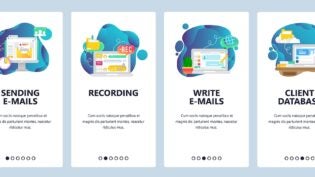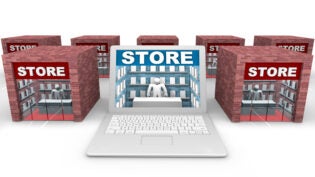Mobile marketing is nothing new. For the past decade, retailers — or really, marketers of retailers — have been trying to leverage mobile devices to drive traffic through brick-and-mortar doors and for good reason.
Just like their keys, wallets, and pocketbooks, most consumers won’t stray far from home without their smartphones in their hands or pockets. Couple this with the fact that:
- 59 percent of consumers venture into businesses after finding promotions online.
- 75 percent of smartphone users retrieve information related to their location.
- 40 percent of mobile searches are for local businesses.
You can see why more and more retailers are “going mobile” with their marketing efforts. It’s one of those rare opportunities to put a sale or discount directly into the hands of someone who just might use it.
Like any marketing effort, though, mobile marketing continues to evolve — largely due to GPS-enabled smartphone usage.
With the help of geofencing, marketing becomes more location-based, and campaigns become more targeted. Retailers know when consumers are in the vicinity (or step into “geofences”) and can send alerts, ads, coupons, or special gifts directly to their smartphones to drive awareness and business.
Macy’s is one brand utilizing this marketing tactic. In New York, Chicago, Los Angeles, and San Francisco, the retailer is utilizing the Shopkick app to make customers visiting the store aware of current offers via push notifications. Other retailers, including Best Buy, Sports Authority, and American Eagle Outfitters, use this app for the same purpose.
Geofence Your Small Business
That’s not to say that geofencing can’t easily be applied to your small business, however. Indeed, anyone can implement a technology like geofencing and reap the rewards almost instantly. Small businesses, especially, can’t ignore the possibilities for adopting a location-based service and using it to influence a consumer’s purchase decisions.
While increasing brand awareness is the most obvious benefit for this location-based service, there are other opportunities — some of which are still underutilized — for this technology.
1.Data Mining
Devices are capturing data all around us, and the smartest ones not only know what we like, what we eat, what we buy, and where we do it all, but also when we like it, eat it, buy it, and do it all.
While the process can be a challenge, compiling all of that data into a system enables more effective marketing initiatives. You can identify what types of messaging consumers respond to the best, then tailor your marketing efforts in the most relevant and valuable direction.
You can also learn which offers result in more sales, how often a particular customer frequents your store, and even the amount of time she spends browsing your wares.
Data mining is key to putting this information in a structure that fosters quick decision-making, enabling you to control your businesses in a more efficient manner, even with many moving parts.
2.Customer Experience
The location-based aspect of geofencing also has the potential to improve a user’s brand experience and take customer service to a completely new level.
For example, a delivery company can use geofencing to provide real-time updates to customers waiting for their parcels. So, as the delivery truck is approaching its delivery location, an alert can be sent to notify the resident that her delivery will be arriving within 30 minutes. And this is only one example of improved customer service.
In fact, location-based technology can take into account a number of variables — such as traffic patterns, available fuel stations, and toll roads — to optimize the delivery route. This ensures that the delivery will arrive on time.
Adding to the user experience is its security application. If a business has to purchase and transport expensive machinery and equipment, for example, a geofence can be set up to notify personnel if an asset ever leaves the predefined geolocation. This added safety measure allows business owners to quickly take the proper steps for asset recovery.
Admittedly, we still need to get to the point where things happen naturally for the audience. We don’t want to disrupt the routines and habits of consumers for the sake of data. If we do disrupt, we must question the actual worth of the information.
3.Adoption Simplicity
We’ve come a long way in terms of what we can do with location-based services, but make no mistake, it’s still expanding to this day. And as technology evolves, it catches the attention of more and more web developers who continue to simplify it for larger audiences.
We’re now at a point where geofence technology is as simple as drawing a shape, setting up rules, and collecting data. Just imagine what this technology will be able to do a year — or even a few months — from now.
At its core, marketing is about putting things in context. And with location-based technology like geofencing, you’ll know the what, where, when, why, and how about your audiences. Armed with that knowledge, you can get down from the one-to-many approach and delve into the one-to-one approach.
After all, not many businesses know exactly how to leverage mobile, but those that do will have a jump on the competition. Like any marketing opportunity, however, it’s always best to enter into the race with clearly defined goals, relevant offers, and an understanding of why a consumer should want to do business with you.
John Horn is the president of RacoWireless, a global M2M service provider that’s revolutionizing the development of the Internet of Things every day. The company enables the most innovative solutions and makes it easy for its partners to build solutions and stay in control of them across the globe. Connect with John on Twitter and Google+.
Additional Resources
3966 Views












